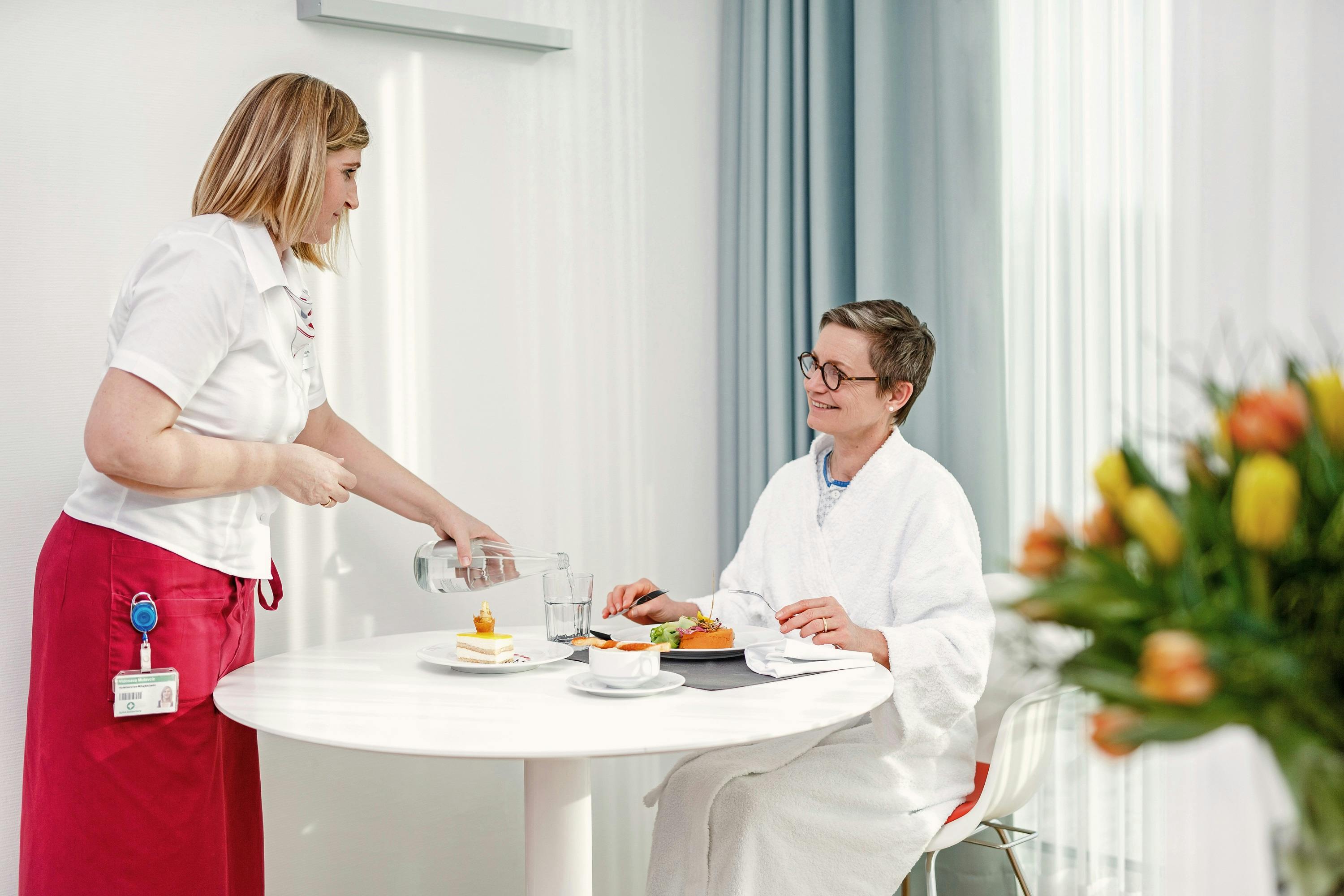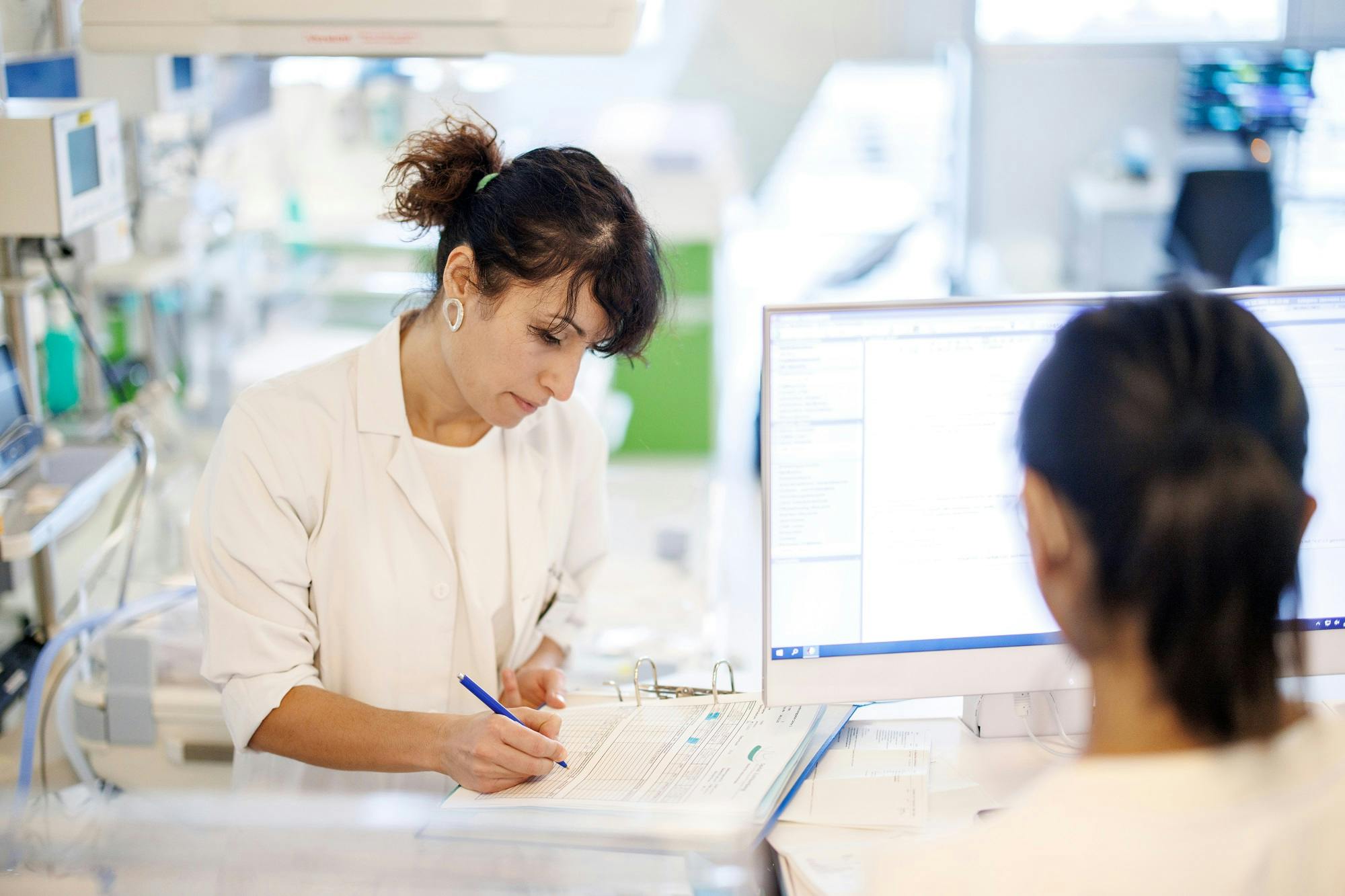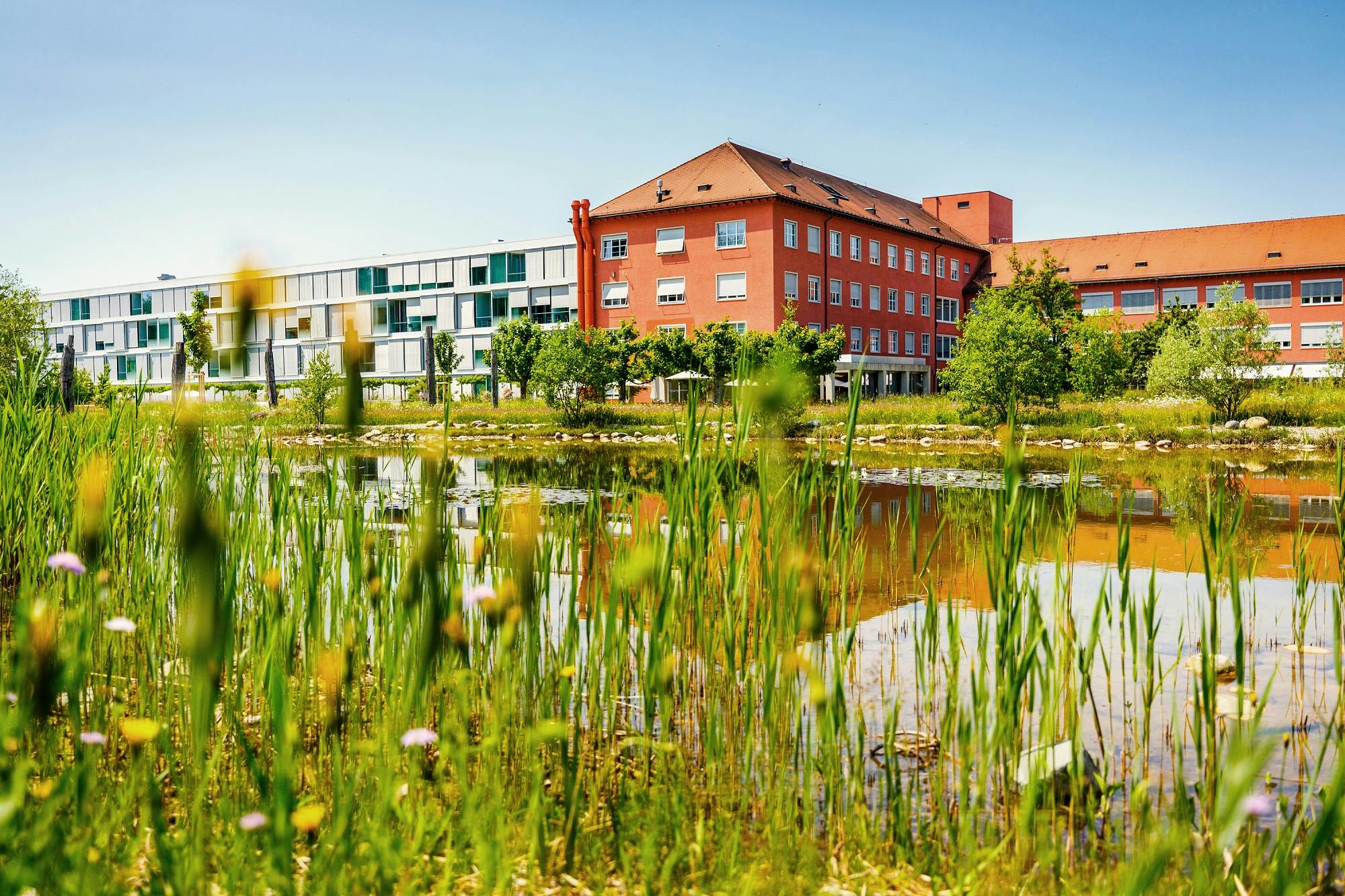Qualified radiology specialists: Link between radiologists and patients
Susanne Naunheim
May 22, 2023
8 min
It all began by chance. Towards the end of the 19th century, Wilhelm Conrad Röntgen discovered invisible rays that could penetrate clothing and various objects during an experiment. He used his wife's hand to take the first X-ray image. How fascinating it must have been around 130 years ago to visualise the skeleton of a living person! Today, X-rays are one of the best-known diagnostic procedures alongside MRI and CT scans. This is exactly where qualified radiology specialists HF are at home. They are the link between radiologists and patients and specialise in diagnostic radiology, nuclear medicine and radiation oncology.
The 130-year history of the X-ray
The biggest difference to the X-ray technology of around 130 years ago is that significantly lower doses of radiation are used today to produce good images. The fact is that only very high, regularly repeated exposure to radiation can cause damage to health. The doctors who regularly tested X-rays on their own limbs at the end of the 19th century and the beginning of the 20th century, whereupon they developed health problems, bear witness to this. On the other hand, this can also be used for medical purposes, particularly in radiotherapy for tumours.
The profession of qualified radiology specialist HF
"I love working with patients and keeping my technical knowledge up to date at the same time," says Tanja Schärli, qualified radiology specialist and vocational trainer at Zollikerberg Hospital. Here she gives an insight into her exciting field of work and the development opportunities for qualified radiology specialists HF.
"We are the photographers of the interior. We look after patients, prepare them for the various images, position them correctly, allay their fears and explain the procedures. We also administer infusions, inject contrast agents and take precautions if there are individual risks for patients," explains Schärli. But that's not all. A second, very important aspect of the job is knowing and being able to operate the impressive computer tomographs, magnetic resonance tomographs and X-ray machines perfectly. Again and again, the finest adjustments have to be made in order to produce meaningful images. As yesterday's technology is already outdated tomorrow, it is important to keep your knowledge up to date. Zollikerberg Hospital provides generous support with internal and external training courses.
Admission requirements and training
If you are interested in this profession, you may be wondering whether you fulfil the requirements for training. Considering the versatility and responsibility of this profession, the admission requirements for those interested are relatively low:
- Minimum age: 17 years
- 3-year apprenticeship with a federal certificate of competence (including non-medical), alternatively a school-leaving certificate or a diploma from a secondary school
After passing the aptitude test, proof must also be provided that an internship has already been found.
If you fulfil the above requirements, you can register for the admission procedure with our educational partner Careum Education Centre, for example. The training programme lasts three years, with school and work placement blocks alternating. One third of the programme is devoted to diagnostics, with students immersing themselves in the fields of nuclear medicine and radiation oncology for the same amount of time.
The "average" students
From 2017 to 2022, around 18 per cent of Careum graduates had completed initial training as a healthcare professional. 17 per cent had a background in dental hygiene. Around 13 per cent had completed a Matura. 4 per cent of students came from the retail trade and 3 per cent were commercial employees.
Most of the students are between 20 and 30 years old, with a few exceptions at the top. The gender ratio is around 80 per cent women and 20 per cent men.
Work locations and development opportunities
Qualified radiology specialists HF are in demand - in hospitals, institutes and in research. You can choose your place of work according to your own preferences and interests. At Zollikerberg Hospital, the focus is on diagnostic imaging. Doctors from the various departments are dependent on meaningful images. Patients from the emergency department, the day clinic, surgery, internal medicine, the intensive care unit and other areas are cared for.
When working in an institute, the focus is usually on diagnostics and in rare, selected institutions, for example at the Paul Scherrer Institute in Villigen, on research, such as cancer treatment. Application specialists no longer have contact with patients, but have new opportunities for personal development. This means that users can be trained, improvements to the application can be developed and faults can be resolved.
Development opportunities at Zollikerberg Hospital
Qualified radiology specialists HF have various development opportunities. In addition to the aforementioned directions and specialisations, careers at Zollikerberg Hospital are possible in the direction of team leadership or as a vocational trainer. "I myself am a good example of how you can develop in Radiology at Zollikerberg Hospital. I already worked here a few years ago. After an external ward, I returned and now support future colleagues as a vocational trainer," says Schärli, smiling and making her way to the next patient.
0/0
0/0
Weitere Beiträge
Counsellor
Hormone fluctuations in winter: What's really behind them?
Many women experience changes in their physical and mental well-being in winter. They feel tired more often, less resilient or more emotionally sensitive. Cycle changes or more intense premenstrual symptoms are also noticed more often during this time. In addition to external factors such as the cold, less exercise or a change in lifestyle, hormonal processes can also play a role.
Counsellor
Spinal surgery: everything you need to know
At Zollikerberg Hospital, the highest precision applies to one of the most central and at the same time most demanding areas of the body - the spine. Spinal surgery here means not only modern, minimally invasive technology, but above all sound expertise, experience and careful, holistic care. This is what Dr Filippo Mandelli, Head of the Spinal Surgery Clinic, and his team stand for. They treat conditions such as herniated discs, spinal canal stenosis, spondylolisthesis, spinal deformities and degenerative changes competently and sensitively and accompany patients on their way to greater stability and quality of life. In this interview, you can find out what is particularly important in these complex interventions - and what modern spinal medicine can achieve today.
Counsellor
Eyelid lift (blepharoplasty) for drooping eyelids - a brief overview
The eyes are the mirror of our soul - and yet drooping eyelids, bags under the eyes or sagging skin on the eyelid can leave a tired and older impression. If you would like to regain an alert, fresh look, an eyelid lift (blepharoplasty) at Zurich Plastic Surgery can help. In this blog post, Prof Dr Hisham Fansa, Head of Plastic Surgery Zurich, explains why many people decide to have their drooping eyelids corrected and what is important during this procedure.


